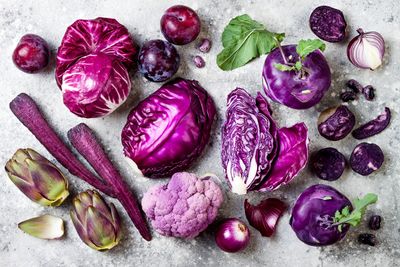Nutrients in Purple Produce
At one time purple was said to be a dignified color reserved only for those with royal blood. Luckily, times have changed, and now anyone can wear purple or eat purple fruits and vegetables. So, what exactly makes up healthy purple foods? The nutrients in purple produce vary depending on the particular fruit or vegetable, however, one thing they all have in common is that they are rich in anthocyanins. Anthocyanins are what give the produce that rich purple hue. They are powerful antioxidants that help boost the immune system, reduce inflammation, and help to prevent cancer. Data from National Health and Nutrition Examination Study found that adults who consume more purple fruits and vegetables have a significantly reduced risk for both high blood pressure and low HDL (“good cholesterol”) and are also less likely to become overweight.
Purple Foods for Health
Anthocyanins are more prevalent in berries, therefore, people are encouraged to eat more berries – in this case, blackberries and blueberries. Keep in mind healthy purple foods such as berries aren’t the only option available when considering purple foods for health. Other fruits and vegetables that contain these antioxidants include purple varieties of:
Black currants
Elderberries
Figs
Grapes
Plums
Prunes
Eggplants
Asparagus
Cabbage
Carrots
Cauliflower
Peppers
Interestingly, it might seem that beets are missing from the list. That’s because they are. The reason for this is because they do not contain anthocyanins. However, they do contain betalain pigments which replace anthocyanins in some plants and are also healthy antioxidants, so eat your beets for added measure!
